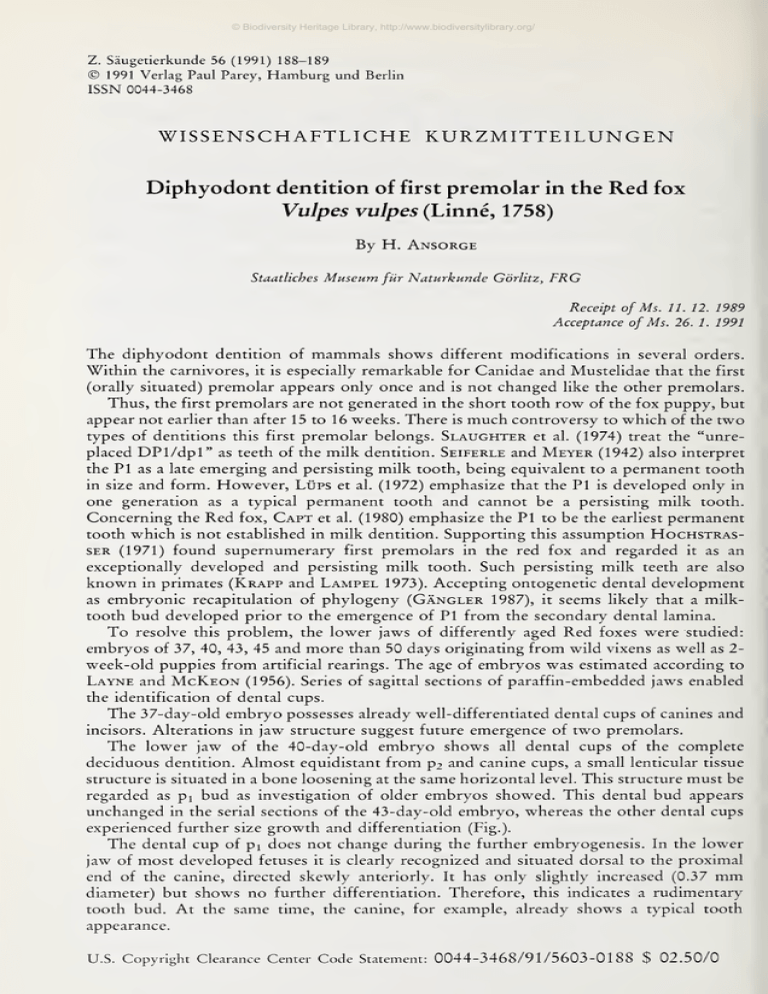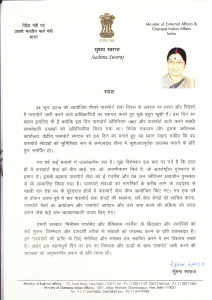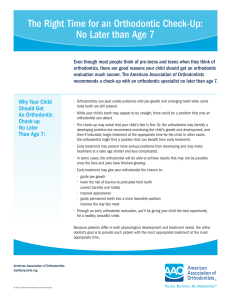Zeitschrift für Säugetierkunde : im Auftrage der Deutschen
Werbung

© Biodiversity Heritage Library, http://www.biodiversitylibrary.org/
Z. Säugetierkunde 56 (1991) 188-189
©
1991 Verlag Paul Parey,
Hamburg und
Berlin
ISSN 0044-3468
WISSENSCHAFTLICHE KURZMITTEILUNGEN
Diphyodont dentition of first premolar in the Red fox
Vulpes vulpes (Linne, 1758)
By H. Ansorge
Staatliches
Museum für Naturkunde
Görlitz,
FRG
Receipt of Ms. 11. 12. 1989
Acceptance of Ms. 26. 1. 1991
dentition of mammals shows different modifications in several Orders.
Within the carnivores, it is especially remarkable for Canidae and Mustelidae that the first
(orally situated) premolar appears only once and is not changed like the other premolars.
Thus, the first premolars are not generated in the short tooth row of the fox puppy, but
appear not earlier than after 15 to 16 weeks. There is much controversy to which of the two
types of dentitions this first premolar belongs. Slaughter et al. (1974) treat the "unreplaced DPl/dpl" as teeth of the milk dentition. Seiferle and Meyer (1942) also interpret
the PI as a late emerging and persisting milk tooth, being equivalent to a permanent tooth
in size and form. However, Lüps et al. (1972) emphasize that the PI is developed only in
one generation as a typical permanent tooth and cannot be a persisting milk tooth.
Concerning the Red fox, Capt et al. (1980) emphasize the PI to be the earliest permanent
tooth which is not established in milk dentition. Supporting this assumption Hochstrasser (1971) found supernumerary first premolars in the red fox and regarded it as an
exceptionally developed and persisting milk tooth. Such persisting milk teeth are also
known in primates (Krapp and Lampel 1973). Accepting ontogenetic dental development
as embryonic recapitulation of phylogeny (Gängler 1987), it seems likely that a milktooth bud developed prior to the emergence of PI from the secondary dental lamina.
To resolve this problem, the lower jaws of differently aged Red foxes were studied:
embryos of 37, 40, 43, 45 and more than 50 days originating from wild vixens as well as 2week-old puppies from artificial rearings. The age of embryos was estimated according to
Layne and McKeon (1956). Series of sagittal sections of paraffin-embedded jaws enabled
The diphyodont
the identification of dental cups.
The 37-day-old embryo possesses already
well-differentiated dental cups of canines and
jaw structure suggest future emergence of two premolars.
The lower jaw of the 40-day-old embryo shows all dental cups of the complete
deciduous dentition. Almost equidistant from p 2 and canine cups, a small lenticular tissue
structure is situated in a bone loosening at the same horizontal level. This structure must be
regarded as p! bud as investigation of older embryos showed. This dental bud appears
unchanged in the serial sections of the 43-day-old embryo, whereas the other dental cups
experienced further size growth and differentiation (Fig.).
The dental cup of pj does not change during the further embryogenesis. In the lower
jaw of most developed fetuses it is clearly recognized and situated dorsal to the proximal
end of the canine, directed skewly anteriorly. It has only slightly increased (0.37
diameter) but shows no further differentiation. Therefore, this indicates a rudimentary
tooth bud. At the same time, the canine, for example, already shows a typical tooth
incisors. Alterations in
mm
appearance.
U.S. Copyright Clearance Center
Code
Statement:
0044-3468/91/5603-0188 $ 02.50/0
© Biodiversity Heritage Library, http://www.biodiversitylibrary.org/
Diphyodont dentition of first premolar
Sagittal section of the red fox
In sections of the 2-week-old fox
perceptible, beside the
Mj
germ.
It is
in the
Red fox
189
Vulpes vulpes
lower jaw (43-day-old embryo)
puppy
the dental
bud of permanent V is clearly
The deciduous p! tooth
x
situated far buccal in the jaw.
bud of the older embryos placed
lingually between canine and second premolar has
cannot be identical with this permanent tooth bud.
Therefore, the first premolar appears in the deciduous dentition of the red fox at about
dissolved.
It
the 40th embryonic day. This tooth
shows no further differentiation and remains in the jaw
rudimentary tooth bud. It dissolves in the first two weeks after birth. Thus, the red fox
shows a complete diphyodont dentition by secondary suppression of the first premolar.
as a
Literature
S.; Lüps, P.; Führer, W. (1980): Zur Größen- und Längenvariation des P
beim Rotfuchs
Vulpes vulpes. Kleine Mitt. Naturhist. Mus. Bern Nr. 10, 1-5.
Gängler, P. (1987): Klinik der Konservierenden Stomatologie. Berlin: Verlag Volk u. Gesundheit.
Hochstrasser, G. (1971): Die Zahnzahl des Rotfuchses, Canis vulpes (Linne, 1758), im Vergleich
mit der anderen Caniden. Säugetierkdl. Mitt. 19, 194-198.
Krapp, F.; Lampel, G. (1973): Zahnanomalien bei Altweltaffen (Catarrhinae). Rev. Suisse Zool. 80,
83-150.
1
Capt,
J. N.; McKeon, W. H. (1956): Notes on the development of the Red fox fetus. New York
Fish Game J. 3, 120-128.
Lüps, P.; Neuenschw ander, A.; Wandeler, A. (1972): Gebißentwicklung und Gebißanomalien bei
Füchsen {Vulpes vulpes L.) aus dem schweizerischen Miteiland. Rev. Suisse Zool. 79, 1090-1103.
Seiferle, E.; Meyer, L. (1942): Das Normalgebiß des Deutschen Schäferhundes in den verschiedenen
Altersstufen. Vierteljahrsschr. Nat. Ges. Zürich 87, 205-252.
Slaughter, B. H.; Pine, R. H.; Pine, N. E. (1974): Eruption of cheek teeth in Insectivora and
Carnivora. J. Mammalogy 55, 115-125.
Layne,
Autbor's address: Dr.
Hermann Ansorge,
schungsstelle,
PF
425,
Staatliches
O-8900
Museum
für
Naturkunde
Görlitz,
Görlitz, Bundesrepublik Deutschland
For-

